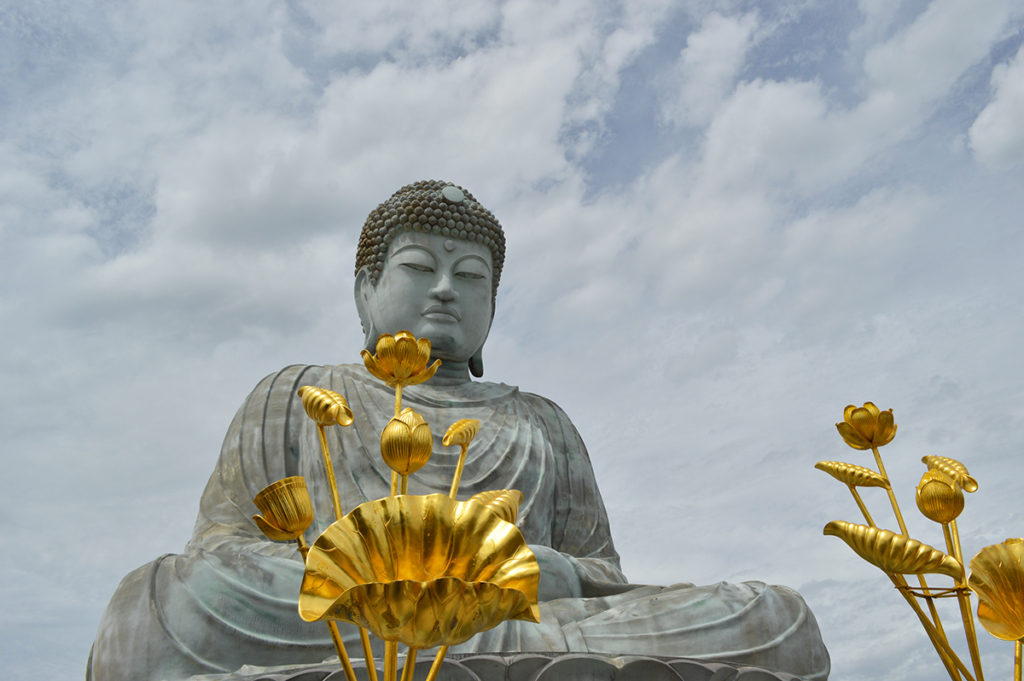With history so deep in Japan, it is hard to explain every detail concerning each period or Era, along with each Feudal Lord that lead those Eras. It is even more difficult to explain the path of religion that was brought into Japan from India, China and other locations and all the different sects that have evolved over the years in those religions. Of course the most visited Temples and Shrines in Japan, offer a lot of written material about these topics, but even then, Japanese people themselves have a hard time to follow the history.
Sometimes, it is better to have an open mind when visiting the Shrines and Temples, and actually enjoy them for what they represent today instead of trying to understand the history.
I sometimes, just get onto my road bike and head somewhere I haven’t been before, just because I have heard that Temple’s name but aren’t too sure on what it represents. This often leads to a new discovery or two, and you find yourself at a place that isn’t one of the “must see” locations, so you are away from all the crowds.
One discovery I found, won’t make breaking news, but I was glad I went. I happened to stumble upon a Temple called Nofuku-ji Temple which is based in the Harbor City of Kobe, Hyogo Prefecture. As I am intrigued with Temples, Shrines, Castles and the odd Buddha Statue, Nofuku-ji dragged me into its gravitational pull as soon as I heard the word DAIBUTSU or Buddha statue.
Nofuku-ji Temple itself was established in the year 806 which is a feat itself, but more so was the existence of the large Buddha statue situated outside. By the way Nofukuji Temple is included as one of the 33 Temples to visited in the Saigoku Pilgrim route and it also holds the Grave of Kiyomori Taira who was one of the most decorated Military Shogun’s towards the end of the Heian Period (Year 794 to 1185 ) .
The largest Buddha Statue in Japan is at Todaiji Temple which is in Nara. That stands at approx. 18 meters. The next largest Buddha Statue is at Kamakura which is at a height of 13 meters. To my surprise, officially the third largest Buddha Statue is here at Nofukuji Temple.
Nofukuji Temple’s Buddha Statue is at 11 meters, and is generally known as one of the top 3 Buddha Statues in Japan. However, there is a slightly sad story about this Buddha Statue.
The Buddha Statue which is known as “The Hyogo Buddha” (with Hyogo being the prefecture that holds, Kobe, Himeji, Nishinomiya, Akashi and many other Cities) was created after a donation of a wealthy merchant in 1891 and until 1944 which is over half a century, was known as one of the biggest three Buddha statues in Japan.
Unfortunately in 1944, the metals of the Buddha were needed to be melted down and given back to the Country during World War 2. But close to 50 years later, in 1991 the 2nd Hyogo Buddha was created. It represents the same concept as the largest Buddha Statue in Nara, which offers Spiritual Enlightenment to the entire human race. The Hyogo Buddha is 11 meters tall, or 18 meters tall with the Lotus Platform included and still one of the 3 biggest and meaningful Buddha Statues in Japan. The 60ton statue sits outside which is relatively rare in Japan, and even when they had the opening Ceremony (Or the Open Eye ceremony, as they say in Japan) the Priests in charge of the Nara Buddha Statue where also present.
Just to be in the same complex as this Statue was enough for me to want to come back some other day. Also the eyes of the Buddha certainly looked like they would look after me, and no matter where you walk around in the complex, those eyes seem to follow you movements.
The 1st Hyogo Buddha didn’t survive the pressure of World War 2, but miraculously this 2nd Buddha statue survived the magnitude 7.3 Awaji-Hanshin Earthquake in 1995. Coming here is a great thing to do if you want to get away from the crowded Temples and Shrines, and get a little bit of inspiration which you can do by looking at this detailed creation.

Comments are closed